What is a Charcuterie Board: 10 Tips for an Easy Wine Pairing Appetizer
A charcuterie plate menu for wine lovers
People often ask, “What is a charcuterie board (plus how to pronounce it) and what should go on it?” This is one of the easiest appetizers to serve at a wine tasting, and it’s basically a beautiful platter filled with cured meats, cheeses, olives, mustards and more. Perfect for busy lives, the charcuterie board has an ability to wow guests with endless food and wine pairing combinations and assembling it is quick. Here are our top tips for how to make the best charcuterie board for wine tastings, including a demonstration video and ingredient list diagram. This charcuterie platter is sure to impress all of your wine-loving friends, especially those with a taste for cabernet sauvignon and chardonnay. Consider this your own charcuterie and wine tasting kit to replicate at home. Then, you can answer the question of what a charcuterie board is with confidence! (Learn our tricks in real time when you’re visiting Healdsburg, California, with Jordan Winery’s Wine & Charcuterie Tasting.)
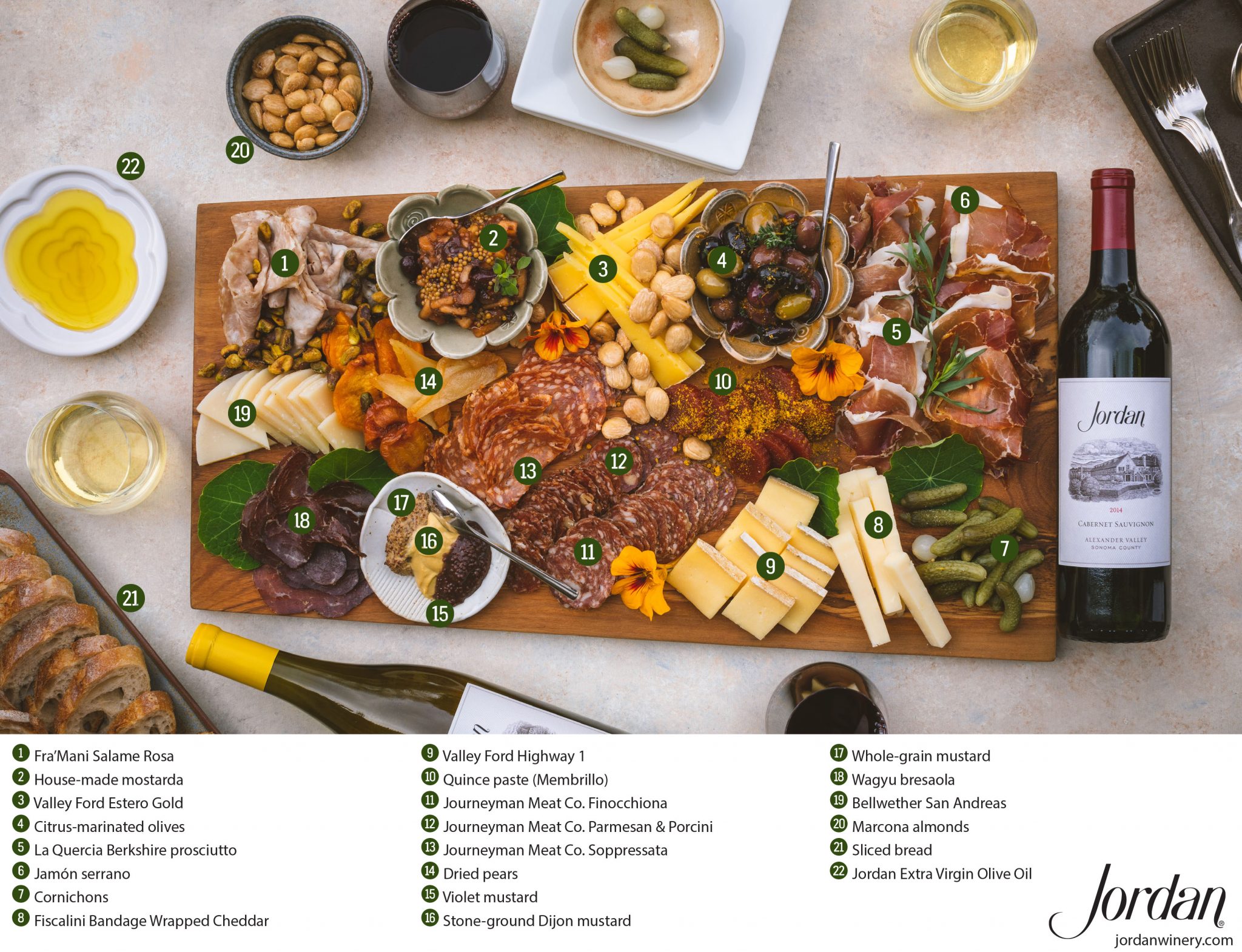
Click here to download our charcuterie plate menu diagram
What is a Charcuterie Board? 10 Tips for Crafting the Best Wine Tasting Appetizer
- Select a variety of meat textures, from prosciutto and bresaola to pate to salami
- Choose meats that pair well with wine
- Pair with higher acid, lower alcohol wines like a Jordan Cabernet Sauvignon
- Choose different cheese that complement specific wines
- Purchase the right quantity
- Slice meats cold and not too far in advance
- Remember accoutrements
- Create an elegant presentation
- Add a homemade surprise
- Have fun
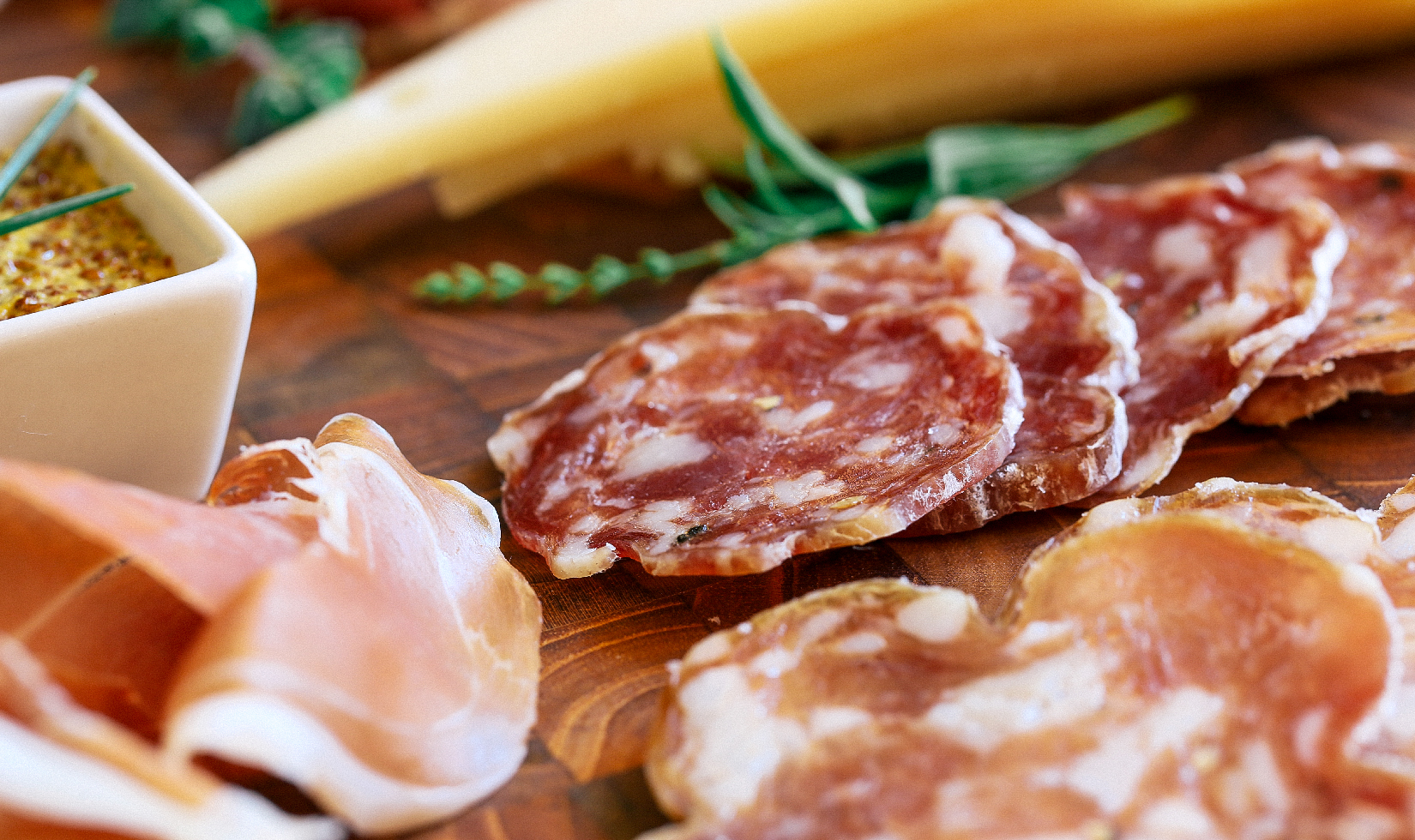
1. Select a variety of meat textures.
Charcuterie should vary by texture, spice profile and slicing thickness to create myriad flavor combinations for food and wine pairing. Our chef likes to serve salami (not to be confused with salumi), alongside terrines, pates and rillettes to create a textural spectrum of meats. Select both sausage-style hard salamis, which are salt-cured and seasoned with spices and herbs, and the more delicate, salt-only cured prosciutto ham, as demonstrated in our how to assemble a charcuterie platter video above. The salting and drying of salami releases moisture in the meat while concentrating flavor. Pate, terrine or rillettes offer a much creamier texture, thanks to fat added during preparation. We prefer to make our own pates, terrines and rillettes, but Olympia Provisions is a wonderful purveyor of ready-made delicacies. Our favorite cured meats to serve at Jordan are currently La Quercia Berkshire Prosciutto of Iowa compared to a Spanish Iberico, Molinari Finocchiona Salame (made with fennel, from San Francisco), Berkeley’s Fra’Mani Nostrano Salame (mild and sweet), Fra’Mani Salame Rosa (uncured, mildly seasoned with coriander, pistachio nuts). We also like to serve 10-month aged Bresaola from Utah’s Creminelli Fine Meats, which is one of the few beef products cured in the prosciutto tradition. Combining salt and a touch of sweetness, the carpaccio-thin Bresaola has stronger flavor than a pork prosciutto.
Charcuterie should vary by texture, spice profile and slicing thickness to create myriad flavor combinations for food and wine pairing. Our chef likes to serve salami (not to be confused with salumi), alongside terrines, pates and rillettes to create a textural spectrum of meats. Select both sausage-style hard salamis, which are salt-cured and seasoned with spices and herbs, and the more delicate, salt-only cured prosciutto ham, as demonstrated in our how to assemble a charcuterie platter video above. The salting and drying of salami releases moisture in the meat while concentrating flavor. Pate, terrine or rillettes offer a much creamier texture, thanks to fat added during preparation. We prefer to make our own pates, terrines and rillettes, but Olympia Provisions is a wonderful purveyor of ready-made delicacies. Our favorite cured meats to serve at Jordan are from our neighbors at Journeyman Meat Co. We serve their Calorosa, a Spanish-style chorizo featuring Jordan Chardonnay, smoked paprika and other spices that pairs well with both red and white wines. We also serve their Salame Buio made with Jordan Cabernet Sauvignon, cocoa powder and other red wine friendly spices that elevate the fine tannins in the wine. Another favorite of ours is their Boschi, an Italian-style salame blended with the first cabernet sauvignon harvested from our Chateau Block vineyard, clove and other spices.
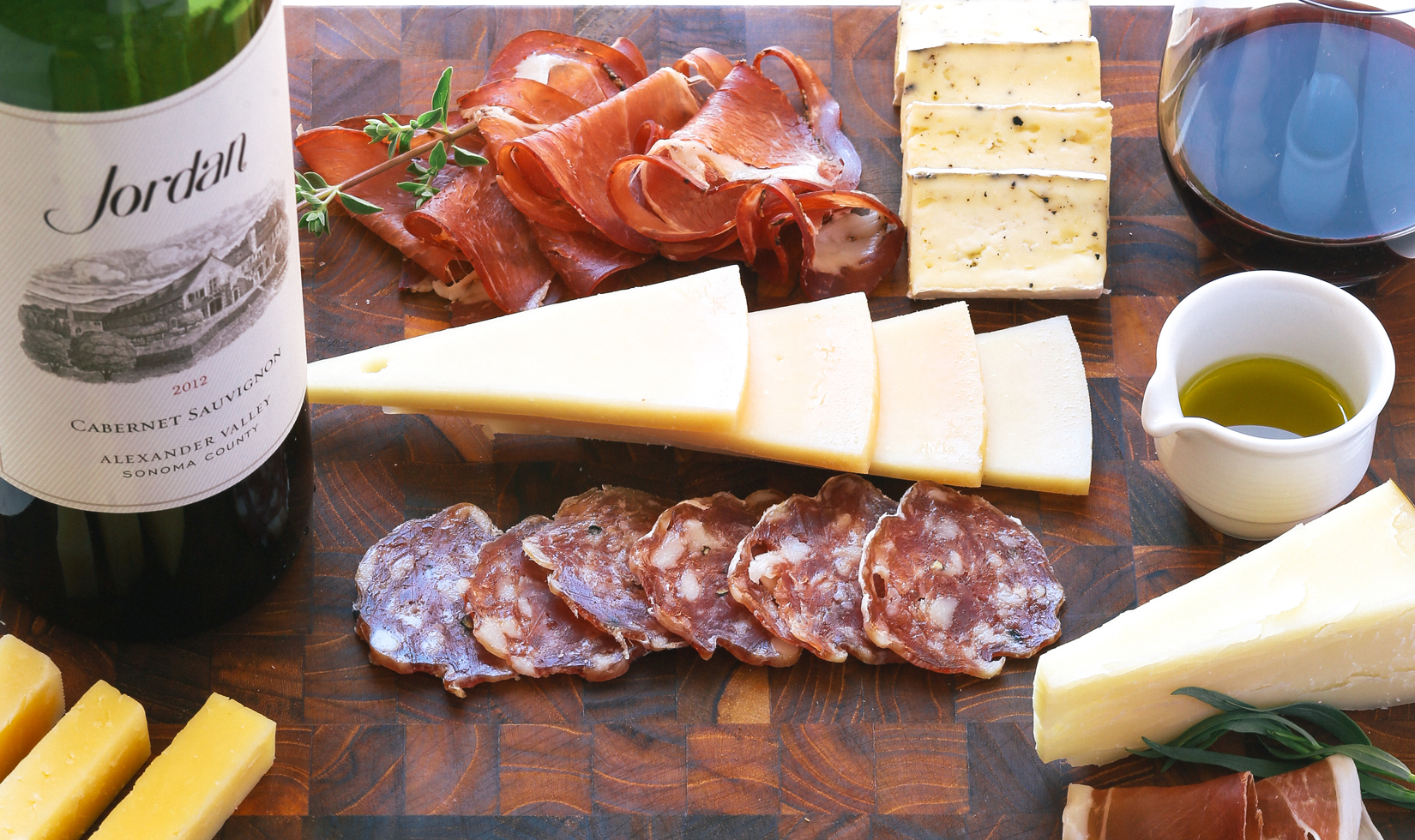
2. Choose meats that pair well with wine.
When following tip #1, a charcuterie board with an array of different cuts and textures lends itself to more versatility with wine pairing. But there are some general guidelines to keep in mind. First, red wines with a lot of alcohol and tannin pose a challenge to meats that are salty and/or spicy. (Salt is used to cure meats like prosciutto and salami, but it’s also a spice that accentuates alcohol.) The combination makes the wine taste hot and the meat even saltier. So, if you enjoy drinking more full-bodied red wines with higher alcohol, such as cabernet sauvignon or merlot, avoid pepper-crusted salami or other meats with whole spices. Because Jordan wines are made in a fruit-forward, elegant, lower-alcohol style, our cabernet sauvignon and chardonnay are much more versatile than bolder versions of the same varietals. If you love prosciutto and you love cabernet, seek out the Creminelli Bresaola beef, which can stand up to fuller red wines; we particularly enjoy the smooth, rich texture of this cured beef because it complements an older, smooth red wine, such as 2008 Jordan Cabernet Sauvignon. Fats in meats help soften the tannins found in red wines, so meats with a higher fat content, such as pates or foie gras terrine, make for a lovely pairing with Bordeaux-style red wines. We love how the smooth texture in both the 2008 and 2012 Jordan Cabernet Sauvignon complements the creaminess in our homemade pork pate, which we make with dried cherries to bring out the fruit in the wine, as well as the richness in foie gras. (Adding dried cherries to pate should also pair nicely with lighter red wines that are lower in alcohol, such as pinot noir or gamay.) When making Jordan pork rillettes, we start with our pork belly recipe to concentrate the flavors, then adds Asian spices and braises the meat with star anise and fennel. The rillettes’ rich texture and herbs complement the silky mouthfeel and earthy notes found in Bordeaux-style red wines like Jordan.
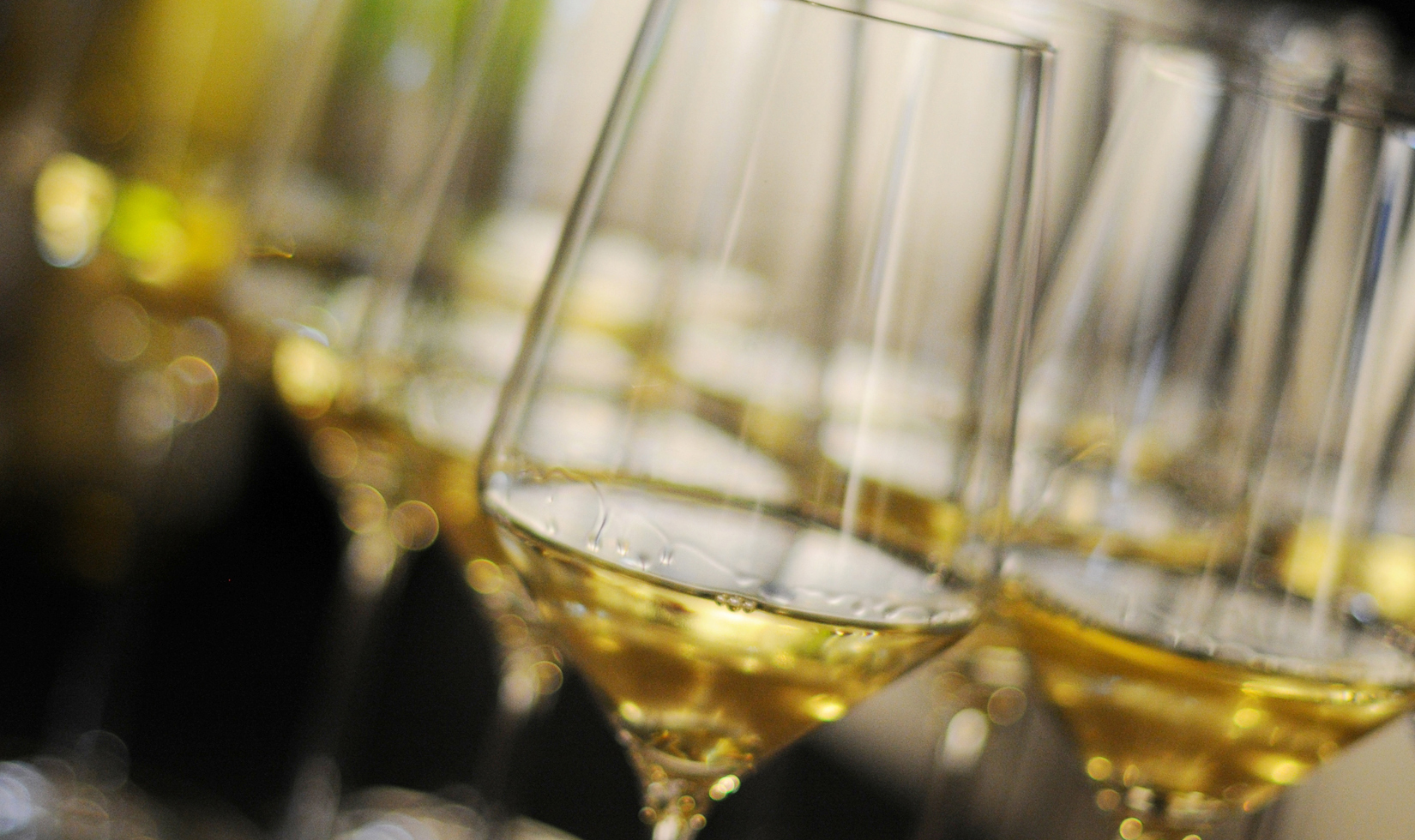
3. Pair with higher acid, lower alcohol wines.
Many experts would argue that fuller-bodied red and white wines are too bold for light charcuterie meats and cheeses, but there are always exceptions to the rules. Champagne and sparkling wine are so often considered the best wine pairing with charcuterie due to high acidity, lower alcohol and their affinity for salty dishes. Because Jordan Cabernet Sauvignon has a silky texture, forward fruit flavor, nice acidity, subtle tannins and lower alcohol, it’s a very versatile red wine with charcuterie. Jordan Chardonnay also has lower alcohol and higher acidity, so it can also work with prosciutto and other salty meats, whereas a big, buttery chardonnay would overpower the pairing and taste hot (see additional comments under tip #2). Similarly, a big, rich Napa cabernet with alcohol above 14% would most likely drown out the meats’ delicate flavors and taste hot and even spicy at times. If you love red wines, the key is to look for those with lower tannins and alcohols under 13.8%.
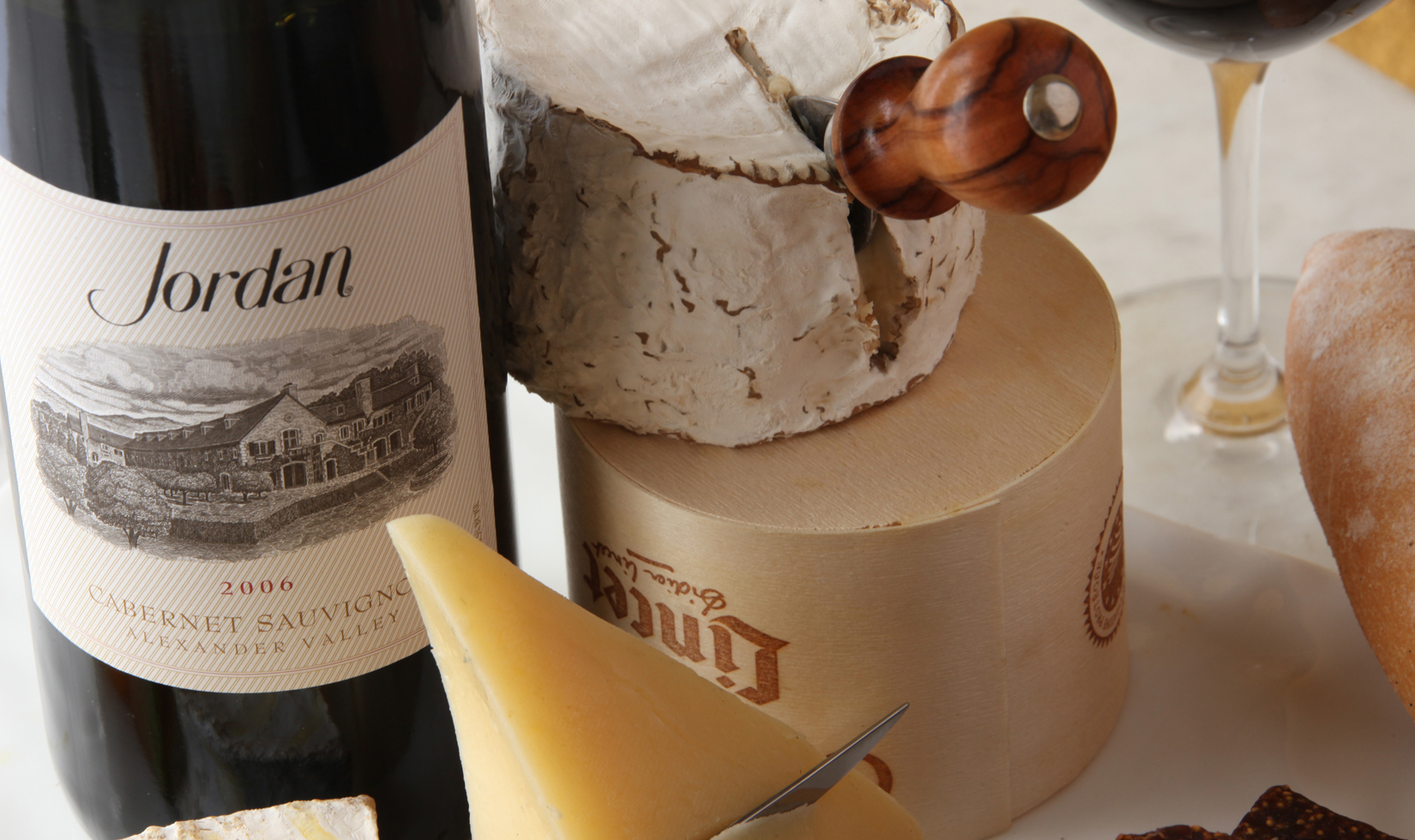
4. Choose different cheeses that complement specific wines.
What is a charcuterie board if not featuring a variety of cheeses with different mouthfeel, fat content and milk types? A boring one, for sure. When pairing cabernet and chardonnay with cheese, there are some general guidelines to help, but trust your own tastes. Sheep’s milk cheeses are usually wonderful pairings for cabernet sauvignon–specifically those with at least six months age when the cheese develops more complexity and nutty flavors. Sheep cheeses have a good mouthfeel and a soft, medium finish, which allows the finish of the cabernet to shine versus overpowering the cheese and vice versa. Manchego and Pecorino cheeses, also from sheep’s milk, also tend to pair well with a balanced cabernet sauvignon. Cow’s milk cheeses are trickier to pair with cabernet sauvignon. Avoid anything too creamy, such as Brie or Camembert, because those cheeses overpower the body of a fine cabernet sauvignon and make it taste thin. (But a more elegant, lower-alcohol Cabernet like a young Jordan can work with a truffle-infused brie, which highlights the earthy notes in both the cheese and the fruit-forward wine.)
Firmer, aged cow’s milk cheeses, such as Gouda and clothbound Cheddar, should be your go-to choice for a cabernet sauvignon and cow’s cheese pairing. Because these cheeses have been aged far longer–usually 3-24 months–they possess a milder, nutty texture and smooth taste that highlights the oak and berry notes in cabernet sauvignon. Firmer cheeses are also recommended for older wines because the wine is leaner, and cheese is leaner; it’s all about balance. (White wines like Jordan Chardonnay are much more forgiving and versatile. The key is lower alcohol, lower tannin, and higher acidity. Learn more in our wine and cheese pairing post.) Two of our favorite cheeses for charcuterie platters Fiscalini’s San Jaquin Gold, a cow’s milk cheese aged for 16 months, creating a mildly sweet and mellow flavor combined with crunchy protein crystals, pleasant acidity and balanced salt that complements the fruit nuances in both older and younger vintages of Jordan Cabernet Sauvignon; and French Marin’s Triple Crème Brie with Truffles, the aforementioned cow’s milk cheese crafted with decadent black truffles. View our shopping list of all the best cheeses for wine lovers.
Cutting cheeses into different shapes and sizes also creates a visually pleasing board, as shown in our how to assemble a charcuterie platter video.
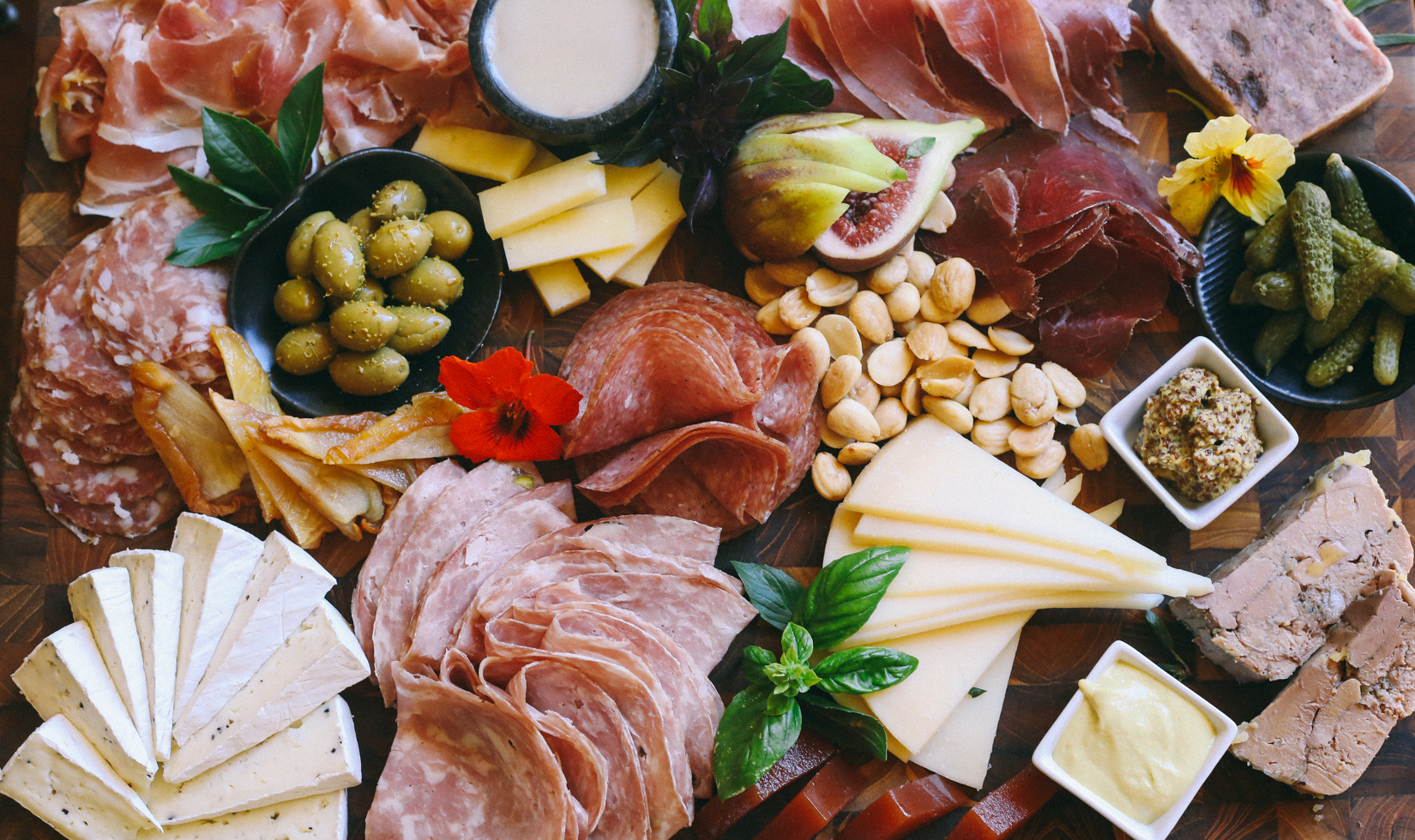
5. Purchase the right quantity.
We recommend purchasing around 2-3 ounces per person per meat for an appetizer portion or 5-6 ounces per person for a cocktail reception. The Jordan charcuterie board pictured above would serve four people as an appetizer. It’s better to have leftovers than not enough, and you don’t have to worry too much about food spoiling. Due to the higher salt content in these meats, they do have a longer shelf-life. Salami can keep refrigerated for a month (if it hasn’t been sliced), while rillettes can last for two weeks if refrigerated and covered with fat (eliminates exposure to air). For cheese, count 1 ounce per cheese, per person. If you’re serving around six meats and 4-6 cheeses as shown in our “How to assemble a charcuterie platter” video, two pieces of each meat and two pieces of each cheese per person is also a safe bet if the charcuterie board is meant to be an appetizer.
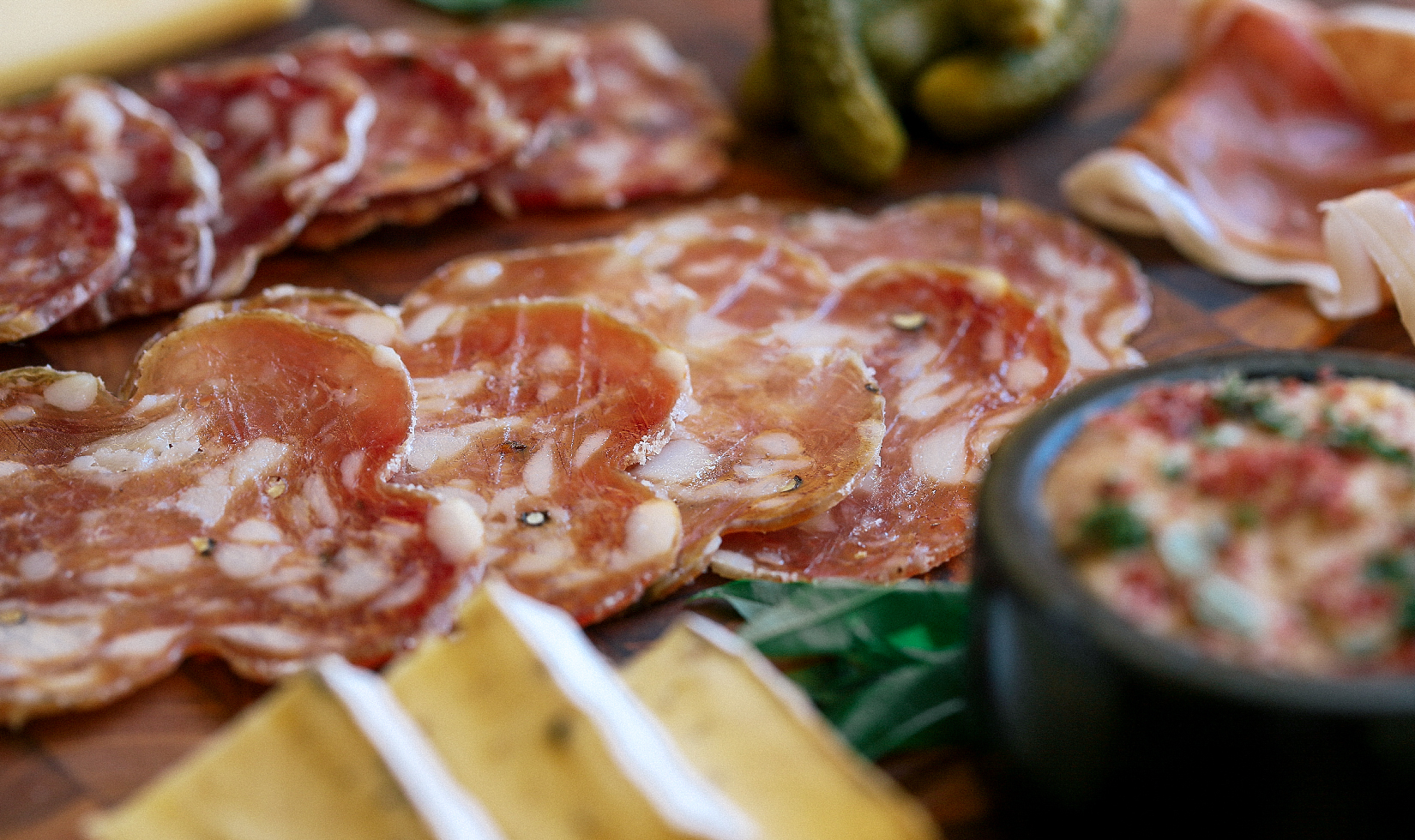
6. Slice meats cold and not too far in advance.
Charcuterie oxidizes quickly and loses its appealing vibrant color and freshness. For prosciutto and salami, slice meats 1-2 hours in advance. Cover with saran wrap and place in refrigerator; remove the charcuterie platter 15 minutes before serving to let the cheeses get closer to room temperature, accentuating their flavors.
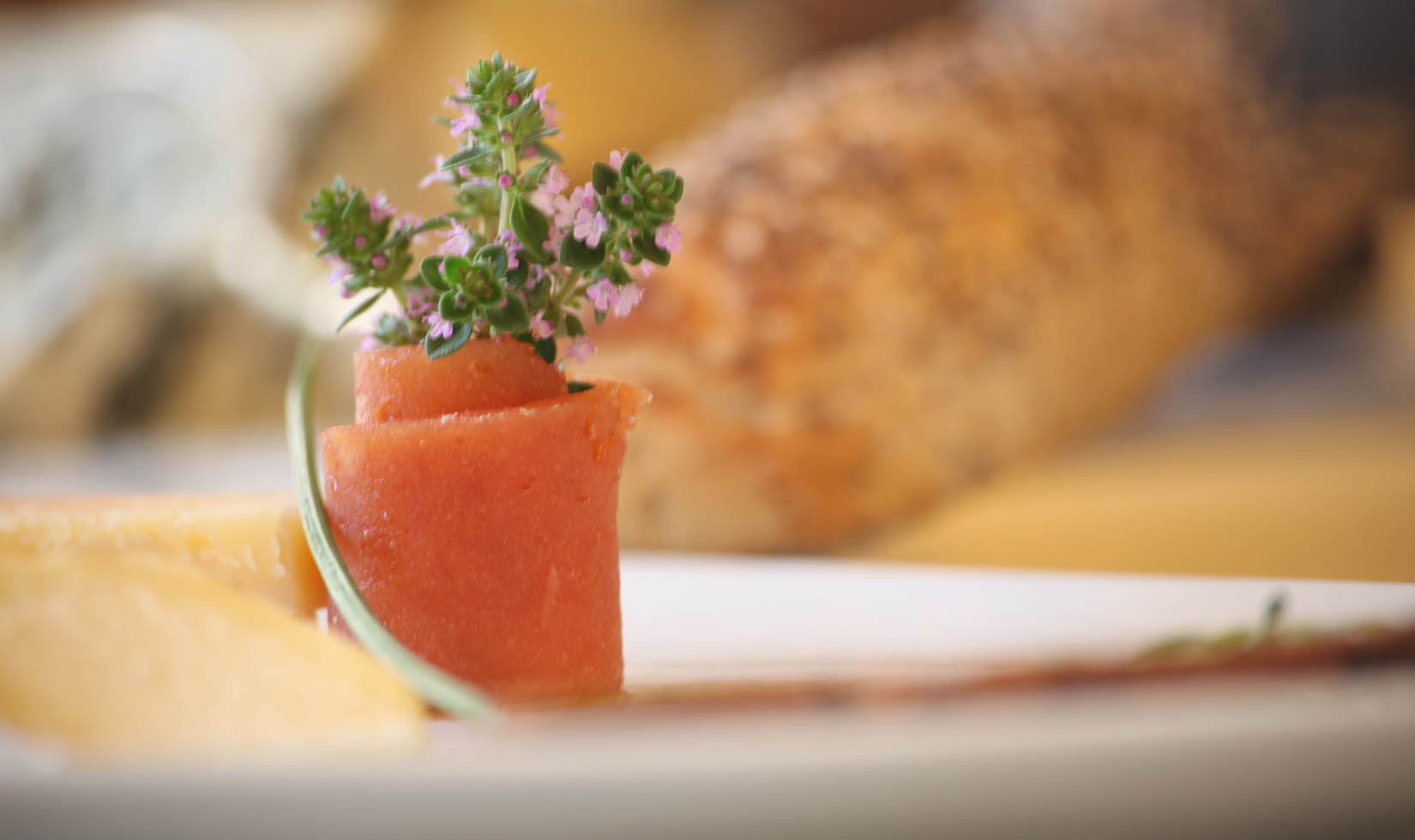
7. Remember accoutrements.
The details make a charcuterie board unique. Serve a simple crusty bread heated in the oven just prior to serving. In addition, the sweetness and textural contrast of a fruit crostini (see our recipe) serves as a foil to the salt and richness of charcuterie and cheese. It also acts as a bridging element to the wine being served. A good classic cornichon and wholegrain Dijon mustard are staples on the Jordan board, bringing acidity and a tannin element to further enhance the wine pairing. Quince paste, and even pear mostarda, have a tannic component that allows this sweet stone fruit to complement a young Jordan Cabernet Sauvignon. The addition of a fine Extra Virgin Olive Oil, such as Jordan’s, and a finishing flake salt (Maldon or fleur de sel) are nice touches for textural diversity.
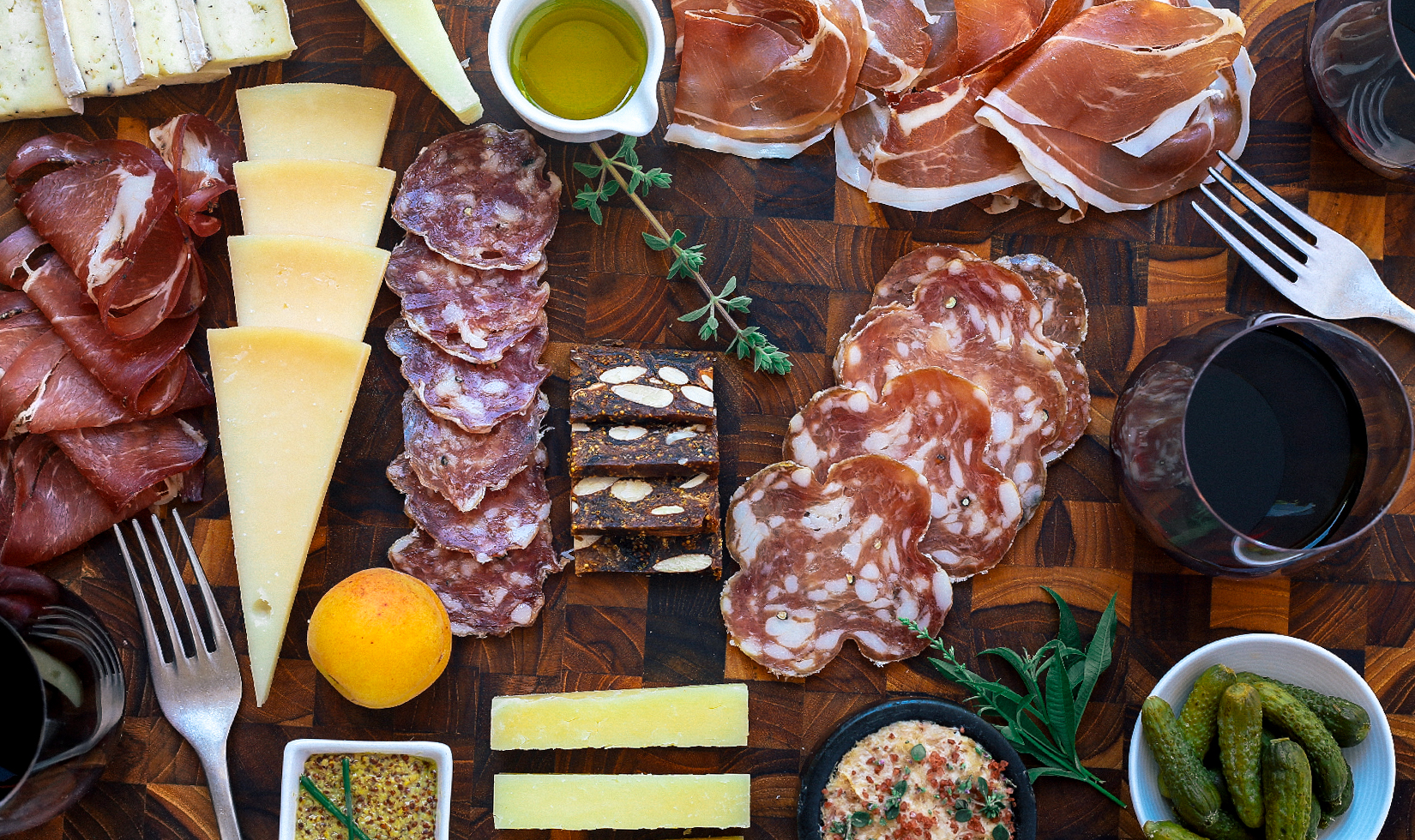
8. Create an elegant presentation.
Take a few extra minutes to organize your meats, cheeses and accoutrements. We like to fold lighter meats into rosettes, cut the cheeses into varying sizes for visual intrigue (cheddar into squares and sheep’s milk into triangles) and turn the sliced salami so that the pieces fan out from the front of the platter. Fresh herbs and edible flowers sprinkled on the plate also highlight the season and bring a pop of color.
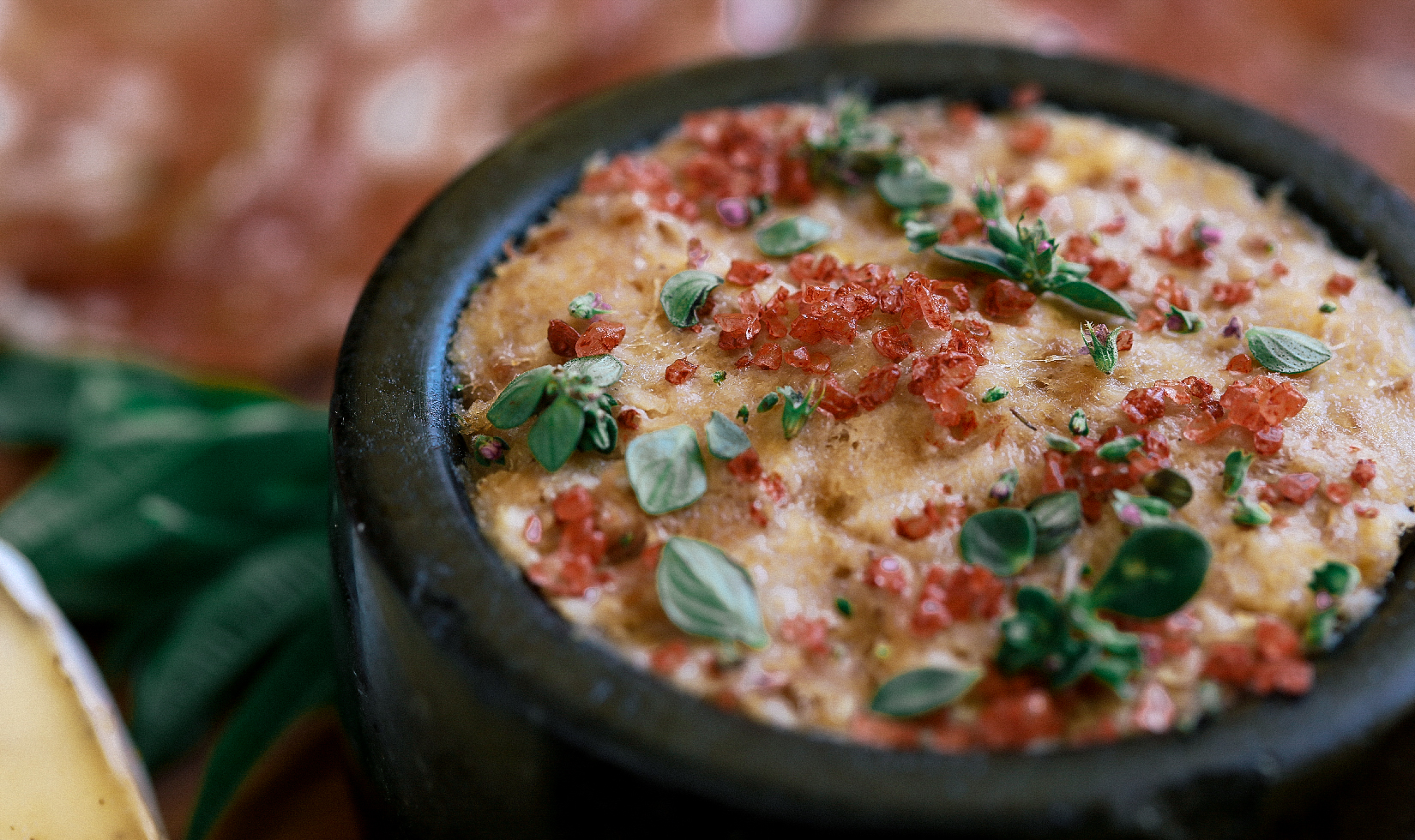
9. Add a homemade surprise.
A charcuterie board can be a place to showcase your creativity and culinary prowess. Even when purchasing most of your charcuterie from respected purveyors, we always incorporate rillettes or pate made at home. They are surprisingly simple to prepare, and will keep, if properly stored under refrigeration, for two weeks. Use our pork rillettes recipe (also linked above), or if you’re in a pinch for time, try Olympia Provisions.

10. Have fun.
Keep experimenting. Trust your own palate and you’ll find the wine and food pairing combinations best suited to your taste.
Bonus tip: Don’t forget the Jordan Cabernet Sauvignon.
View our Guide to Sonoma County Wineries with Wine and Charcuterie Tastings.
Learn more about salami and salumi with Serious Eat’s Salumi 101: Your Guide to Italy’s Finest Cured Meats.
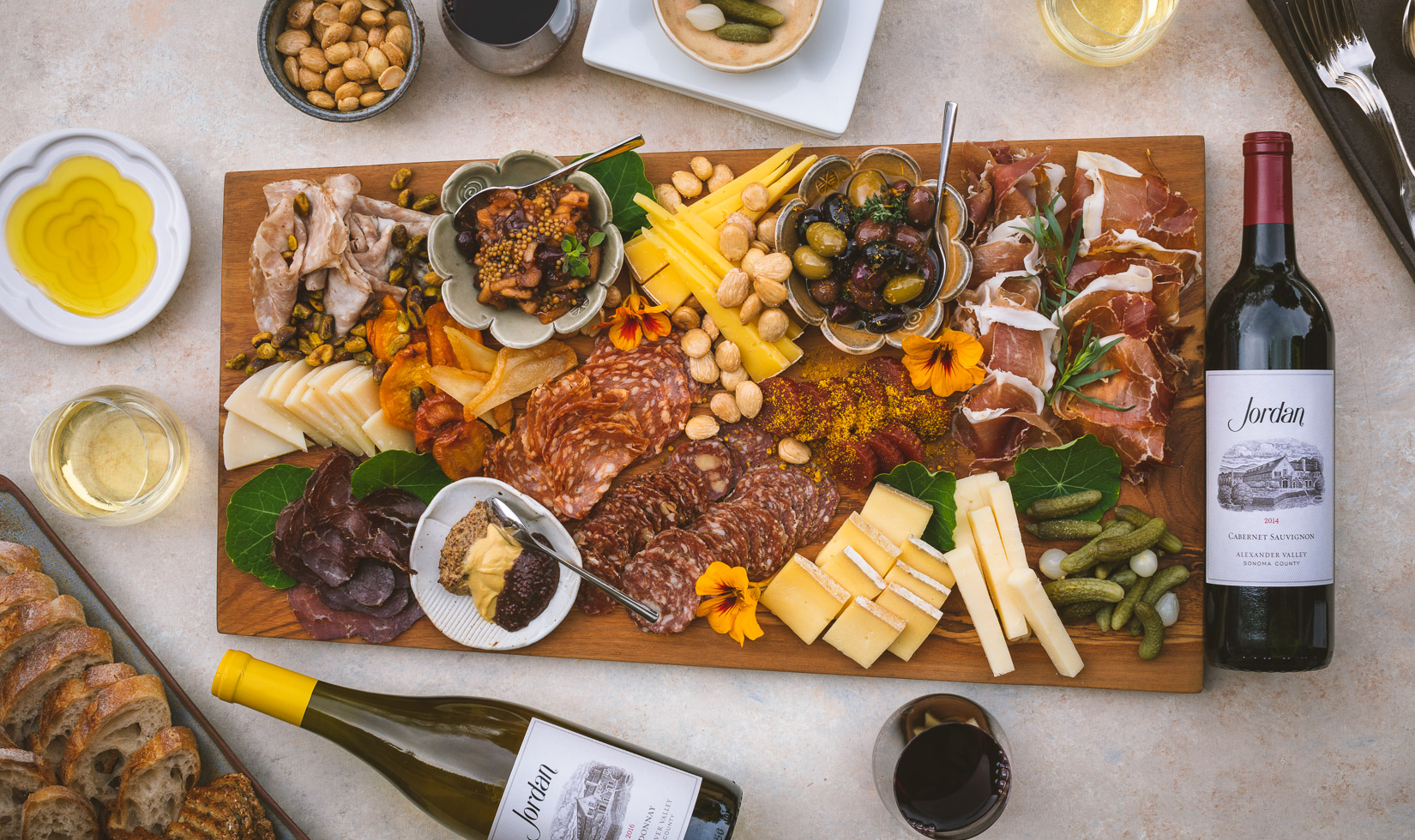
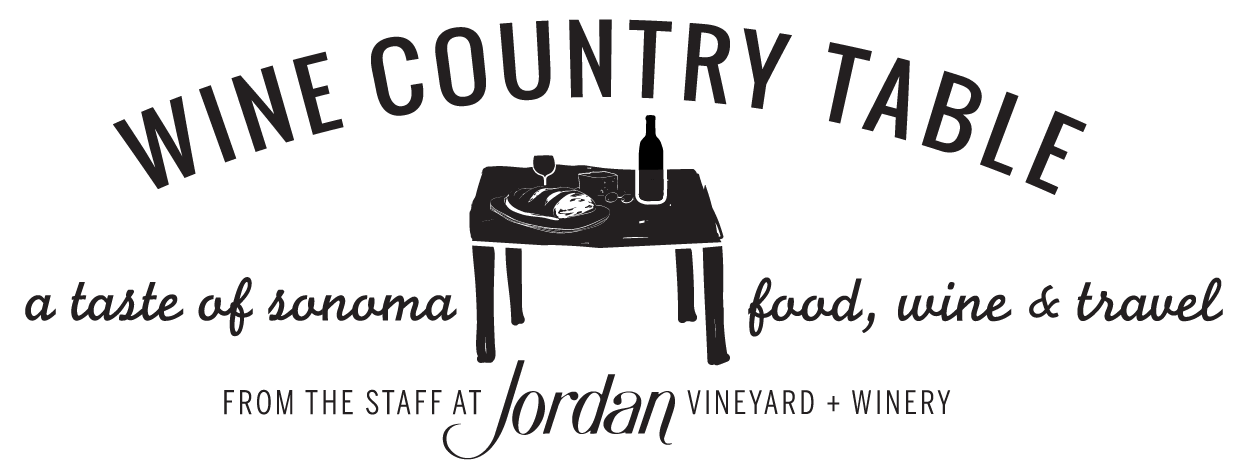
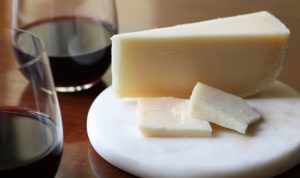
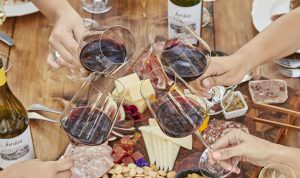
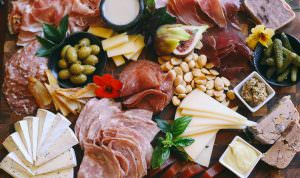
Pingback: 6 steps to the perfect charcuterie board - Detroit Wedding Day
Pingback: how to make cabernet wine at home - Make Homemade Wine
Thanks Lisa, I also bookmarked your article for future reference. Loved all the details and references.
I have a question regarding quantities; when the Chef recommends 2 to 3 ounces of each meat as an appetizer, what about the cheese? If I have 4 types of meat, would I include 8 – 12 ounces per person not including cheese?
Again, thank you for an excellent article
Hello Loren,
I would say 1 oz per cheese per person – that is approximately what we offer on our tour here.
Wow seriously Lisa you way of writing was amazing and i always love to pair wine with food
thanks for sharing i bookmarked for future reference 🙂
This is one of the BEST articles on wine paring I’ve read. Thank you. Besides your juice is GREAT!!!
Glad you enjoyed it, John. Thanks!
Pingback: Wine and Cheese Pairing Tips: Best Cheeses with Cabernet Sauvignon
Such good information! I’ve bookmarked this for future reference- thank you!
We’re really glad you enjoyed it.
Pingback: Top Blog Posts of 2016 | Jordan Winery Wine & Food
This is great, thank you. I have company at the weekend and the Pork Rillettes with Cherry Compote will definitely be on the menu 🙂
Thanks. That’s great to hear.